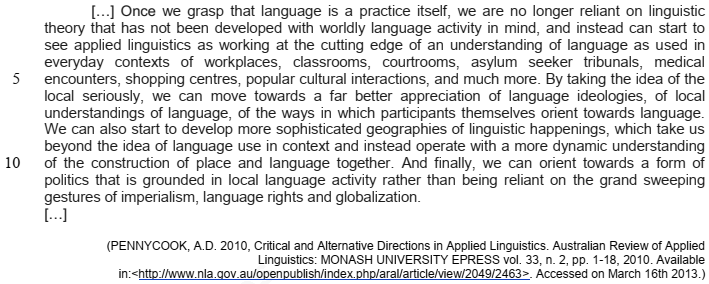Questões de Concurso Público Colégio Pedro II 2013 para Professor - Inglês
Foram encontradas 40 questões
TEXT 1

TEXT 1

TEXT 1

TEXT 1

TEXT 1

TEXT 1

TEXT 1

TEXT 1

TEXT 1

TEXT 1

TEXT 1

TEXT 1

TEXT 1

TEXT 1

TEXT 2:

Taking into account the assumptions that underlie the text, one can say that the author advocates a
linguistic approach that
TEXT 3:

TEXT 3:

TEXT 3:

TEXT 3:

TEXT 4:
